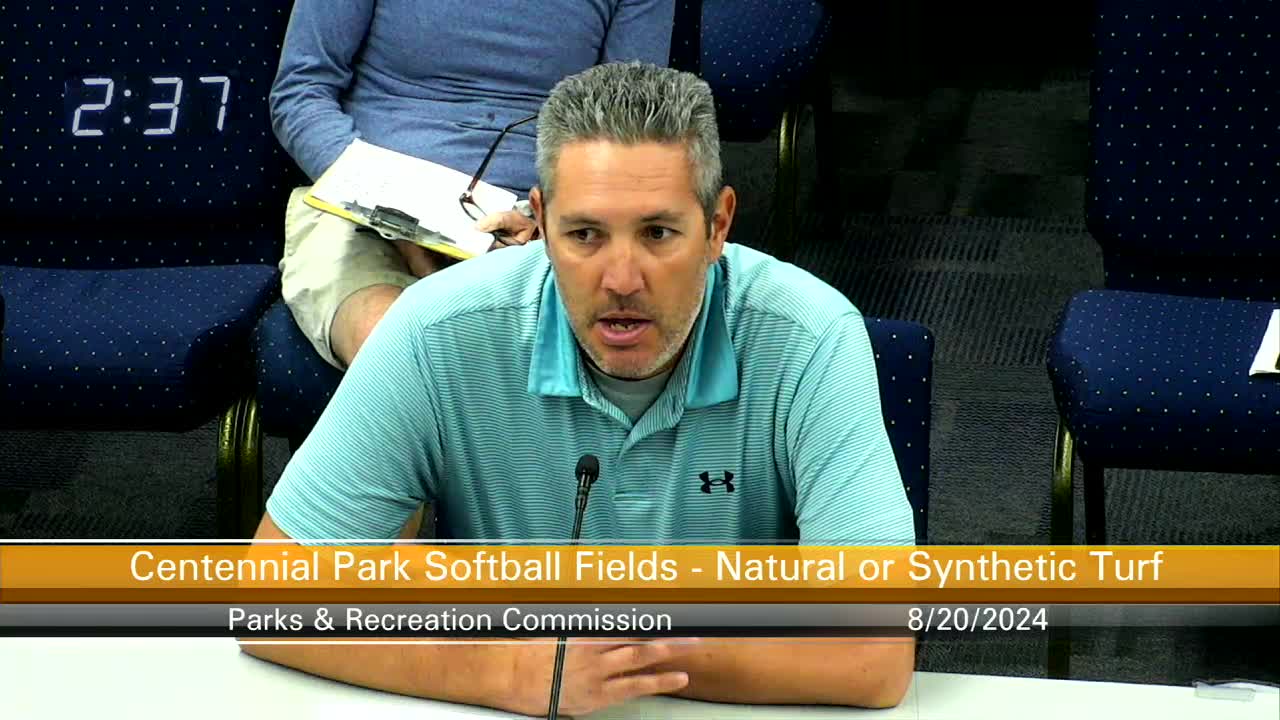Field Safety Concerns Spark Debate Over Turf Investment
August 20, 2024 | Carson City, Ormsby County, Nevada

This article was created by AI summarizing key points discussed. AI makes mistakes, so for full details and context, please refer to the video of the full meeting. Please report any errors so we can fix them. Report an error »

During a recent government meeting, discussions centered on the challenges faced by local Little League organizations regarding field accessibility and maintenance. A representative highlighted the importance of extending the playing season, noting that the current schedule is tightly constrained by the Little League World Series, which begins in January. The representative expressed concerns about field conditions, stating that access to playable fields often does not occur until March, leading to difficulties in scheduling the required twelve games per season.
The representative praised the parks department for their efforts in preparing the fields but acknowledged that adverse weather conditions can render them unplayable. The need for improved field maintenance was emphasized, particularly in light of the volunteer efforts required to keep the fields ready for play. The discussion also touched on the advantages of facilities with synthetic surfaces, which allow for more consistent play and reduced weather-related cancellations.
In contrast, another attendee raised concerns about the potential shift to artificial turf, questioning the safety and environmental implications. They pointed out that while artificial turf may reduce maintenance costs, it could lead to increased water usage and safety issues due to high surface temperatures. The attendee criticized the allocation of funds for artificial turf instead of addressing existing maintenance issues at local parks, arguing that the focus should remain on enhancing community facilities rather than investing in potentially harmful materials.
The meeting underscored the ongoing debate over the best approach to managing local sports facilities, balancing the needs of youth sports organizations with community health and environmental considerations.
The representative praised the parks department for their efforts in preparing the fields but acknowledged that adverse weather conditions can render them unplayable. The need for improved field maintenance was emphasized, particularly in light of the volunteer efforts required to keep the fields ready for play. The discussion also touched on the advantages of facilities with synthetic surfaces, which allow for more consistent play and reduced weather-related cancellations.
In contrast, another attendee raised concerns about the potential shift to artificial turf, questioning the safety and environmental implications. They pointed out that while artificial turf may reduce maintenance costs, it could lead to increased water usage and safety issues due to high surface temperatures. The attendee criticized the allocation of funds for artificial turf instead of addressing existing maintenance issues at local parks, arguing that the focus should remain on enhancing community facilities rather than investing in potentially harmful materials.
The meeting underscored the ongoing debate over the best approach to managing local sports facilities, balancing the needs of youth sports organizations with community health and environmental considerations.
View full meeting
This article is based on a recent meeting—watch the full video and explore the complete transcript for deeper insights into the discussion.
View full meeting